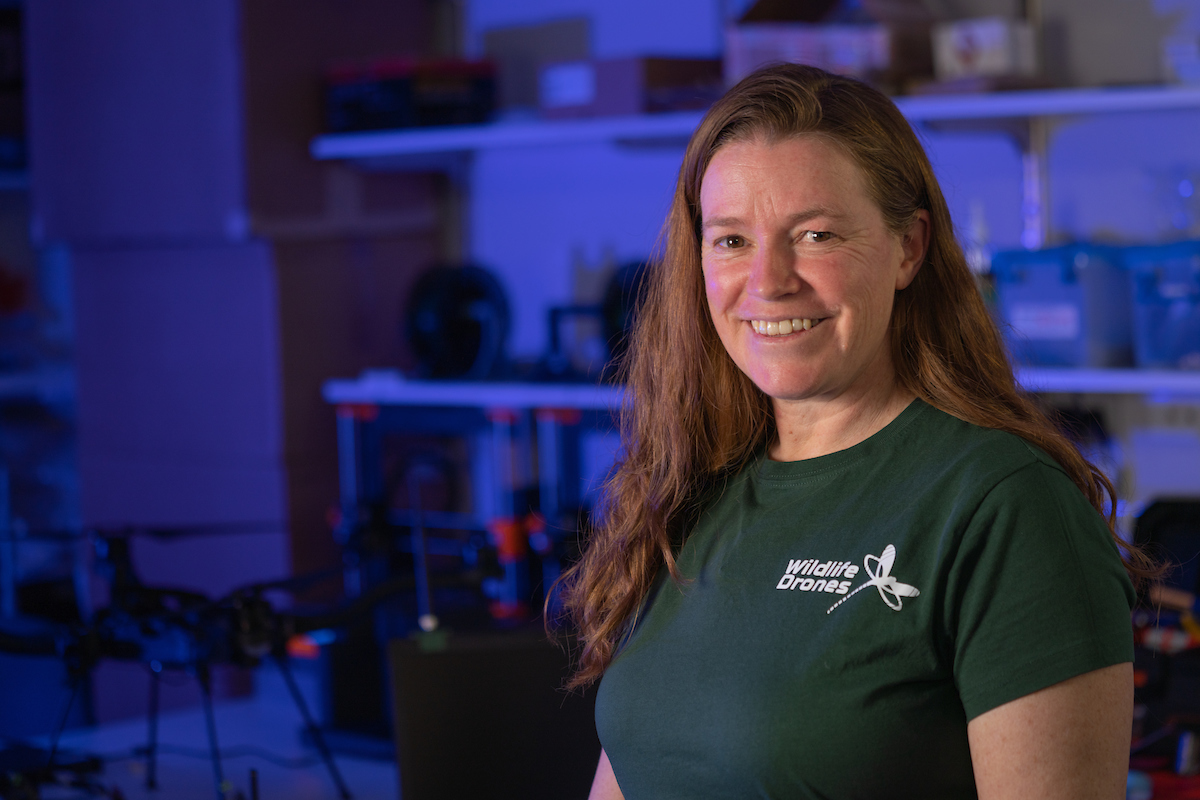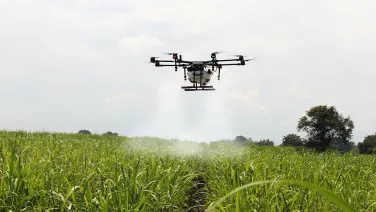After a career searching for threatened species, this ecologist tracked down a new occupation: CEO
As a nature lover, Dr Debbie Saunders, didn’t think words like ‘tech’ and ‘AI’ were meant for her. She’d much rather be thinking about forest canopies or nesting birds or cool rocks than gizmos and gadgets.
Becoming an ecologist felt like a natural fit for her.
“I’m just happiest in the bush,” she says.
There are other things which make this very clear: the beloved Akubra she wears in professional headshots; how she has so many plants at the Centre for Entrepreneurial Agri-Technology that it’s more like an atrium than an office; the way her eyes light up when she’s talking about birds.
But now she’s a tech CEO.

“I never imagined that I would be doing what I do,” she says. “It’s really amazing on many fronts. I kind of have to pinch myself sometimes.”
Dr Saunders leads an award-winning start-up that allows drones to track tagged wildlife. It is used in ecological field work and conservation projects across the globe.
Her career still revolves around nature. But now new technologies and AI have become interesting topics to her, because they are the tools she uses to help other ecologists better understand and protect nature.
Dr Saunders’ company, Wildlife Drones, was born out of her PhD at the Fenner School of Environment and Society at ANU, simply as way to make her fieldwork more efficient.
She was trekking around the bush holding radio tracking gear up in the air to locate endangered swift parrots and wondered if this could be done with a drone instead. After a lot of trial and error, she created a much more time-efficient system that could pick up multiple very high frequency (VHF) radio tags at once.
No more sore arms.

This caused a stir in the ecology world, and soon her drone technology was in demand. Dr Saunders hired a team and developed Wildlife Drones for the market.
“I feel like we’re in a really opportune time where governments and financial institutions are all talking about the need to increase our positive influence on biodiversity instead of continually eroding it,” Dr Saunders says.
Since then, Wildlife Drones has soared to new heights. New heights above the tropical forests of Vietnam to track pangolins, for example.
“Pangolins are notoriously difficult to tag. They have the large scales all over their body,” Dr Saunders says. These pangolins have been rescued from the illegal wildlife trade and released back into the wild, so tracking them is important for their survival.
After much deliberating, the team found it was best to bolt the radio tag direct to a pangolin’s scale. Their scales are made of keratin, like your fingernails, so securing a bolt through the scale doesn’t hurt the animal. Dr Saunders points to a flexible, but reinforced, fabric strap attached to a little metal radio tag with a wire antennae.
“One of the biggest challenges with tagging an animal is that you need to make sure it doesn’t get endangered by the tag itself. And so you can’t do it in a way that it gets caught.” Pangolin babies sit on their mother’s back, so you must also consider where you can put a tag so it won’t interrupt their lives.

The type of tag drastically changes based on the species being tracked. “It can be an ear tag or a collar or an implant. The form doesn’t really matter to us, as long as it is transmitting a VHF signal.”
The tags must be a maximum three to five per cent of the animal’s body weight. “So for a bird that’s very lightweight, they can only have tiny tags, and bats as well,” Dr Saunders says, “and insects even smaller again.”
Hold up: attaching radio tags to insects?
The insect tag is super tiny, roughly the equivalent of the antenna. Dr Saunders explains that in the US, there is currently a project tracking invasive hornets, so they use these itty bitty tags to find out where they live and roam. Given that a drone is basically a robotic hornet, but on a larger scale, this is a satisfying pairing. Imagine the buzzing drone, above a swarm of hornets. Science imitates life.
Apart from tagging your target species, there are many other challenges for Dr Saunders and her team. Drones are noisy, for starters, so you have to be careful to fly parallel to an animal, rather than chasing them to avoid harassment. That low buzzing sound can also interfere with the drone’s ability to pick up radio frequency signals.

The Wildlife Drones team – around nine people now – is always adapting and trying to improve the software and hardware involved. Increasing battery time and tapping into the drone’s own GPS system to reduce weight are priorities.
“Never before have I done so many experiments,” Dr Saunders notes. “We do experiments weekly. And so there’s just this continual learning journey.”
The test site is an ANU-owned property at the foot of Mount Stromlo, around 20 minutes’ drive from the University’s Canberra campus. Here we see the Wildlife Drones team in their element.
“We go out, we develop something, we prototype it, we test it, we iterate, we iterate, we test it, and it just keeps going and going all the time,” Dr Saunders says.
At the property, called ‘Spring Valley’, the team’s engineers and drone pilot have set up a laptop on a camp table surrounded by switches, batteries, cable ties and remote controls. In a landscape of twittering rosellas, vast grasslands, and some lovely big old eucalypts, Dr Saunders’ sole focus is on whether the drone humming above is doing what it is supposed to.
But still in her mind, nature is at the heart of it all.
“I feel like the business has enabled me to have more impact on more threatened species than my research ever did,” she says, as the drone, oblivious to its role, buzzes on overhead.
If you also love nature and want to see what unusual career path it could take you down, take a look at the Master of Science in Agricultural Innovation.



